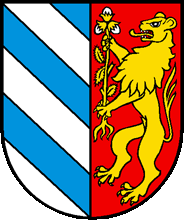Portrait
The street village is located on the right side of the Grosstal in the area of the Freiberg Kärpf between Hätzingen and Schwanden. It consists of the hamlets of Leu (formerly Nesslau), Oberhaslen, Büel, Zussigen and Mülibächli. Originally, the village name referred only on that part of the present village, which covered the north side of the debris cone of the Haslenbach (1370, this stream was already mentioned as Neslower bach). The name is derived from the word has(a)lahe, which means "on the hazel bush" and probably refers to the perennial forest of the debris cone. A similar fact describes probably the term composition Nessel-Au (the shortening to the today´s word Leu is a language particularity in Glarus). Finally, Zussigen means the people "on the Zusse", which is a medieval name for the plant Canodium. Thus, Haslen was around 1300 only a part of the Tagwen (citizen's community) Nesselowe.
A certificate of indebtedness issued 1289 between compatriots of Glarus and Rudolph der Hofstätter mentions a Burchhard from Hasle. More recently it was taken into consideration that this Burchhard was related to or even identical with the baron Burkhard von Schwanden, which owned according to Ägidius Tschudi`s scriptures Chronicon Helveticum until 1298 the castles of Sola and Benzingen. This would support the (archaeologically unsecured) thesis, that remains of a medieval tower are part of the Stüssi House in Zusingen. At least, this house was the main building of Rudolf Stüssi who was at the end of the 14th century a Councillor in Zurich. His son was during the old Zurich war the mayor of Zurich. On this link points the coat of arms of Haslen (created for the national exhibition in 1939): The diagonally divided field with the colors of Zurich symbolizes Zusingen, while the rising lion and the hazel bush should remind the two hamlets of Leu (lion - sic!) and Haslen.
These three settlement were only appointed as one Tagwen (citizen's community Haslen) in the late Middle Ages. To induce this, a disposition of 1471 ruled that the people of Nesselowe, Zusingen and Hasle should build the Blattenensteg (Mühlibächli bridge). 1896 was the detachment of Haslen from the constituency Diesbach.
The village belonged first to the church in Glarus and since 1349 to the church in Schwanden. Before the Reformation, there was a St. Wendelin´s Chapel in Zusingen. The adjacent forest is still called Kappeliwald. Since 1528, Haslen is mostly reformed.
Already in the middle ages, the citizens of Haslen were active in cattle breeding. In the year 1370 a court judgment reports over a dispute regarding wood marking in which citizens from Haslen were involved. A timber cooperation with Hätzingen, Luchsingen, Leugglebach and Nidfurn is documented the first ime in 1496 and forest partitions occurred in 1735 and 1800.
In 1777, there were 137 male citizens from Haslen counted. An own school is already documented eight years later. The first schoolhouse was built in 1839 and in 1873 the today´s primary school house was built. On January 4, 1800, agent Heinrich Hösli from Haslen wrote that in the village neither milk, butter nor potatoes were to be found in the houses and that people, especially children, were forced to emigrate.
Mid-19th century already 787 people lived in Haslen. From 1887 until around 1900 the lining of the Hasler creek was realized (since the beginning of the 21st century a new construction is in progress). Important tasks of the community are also the alp and forest care (large storm damages in 1990 and 1999).
The textile company Daniel Jenny & Co. was founded in 1808 by the ancestors (Bartholome Jenny) of today's owners. A textile printing company in Ennenda was operated until 1906. Since 1846 the company produces on mechanical spinning and weaving machines cotton cloths. The use of existing hydropower was the key factor for the establishment of a company in Haslen. Today there are also a construction company, a synthetic stone factory and various commercial and service outlets domiciled in the village. However, the number of inhabitants decreased between 1960 and 1989 from 765 to 531.
On the Auenalp there is a holiday resort area with year-round occupied houses. The alp Ennetsewen became famous by the landing of the balloon pioneer Eduard Spelterini (1852-1931) on August 1, 1900. He started at the Rigi and arrived on board of the balloon Jupiter together with two passengers in Ennetsewen. A famous citizen of Haslen is also Albert Zweifel who was at the beginning of the 1980s four times world champion in bike racings.
In 2011, the community structure of canton Glarus was reorganized and Haslen became part of the new administrative community Glarus Süd.
Translation of the official website of Haslen
